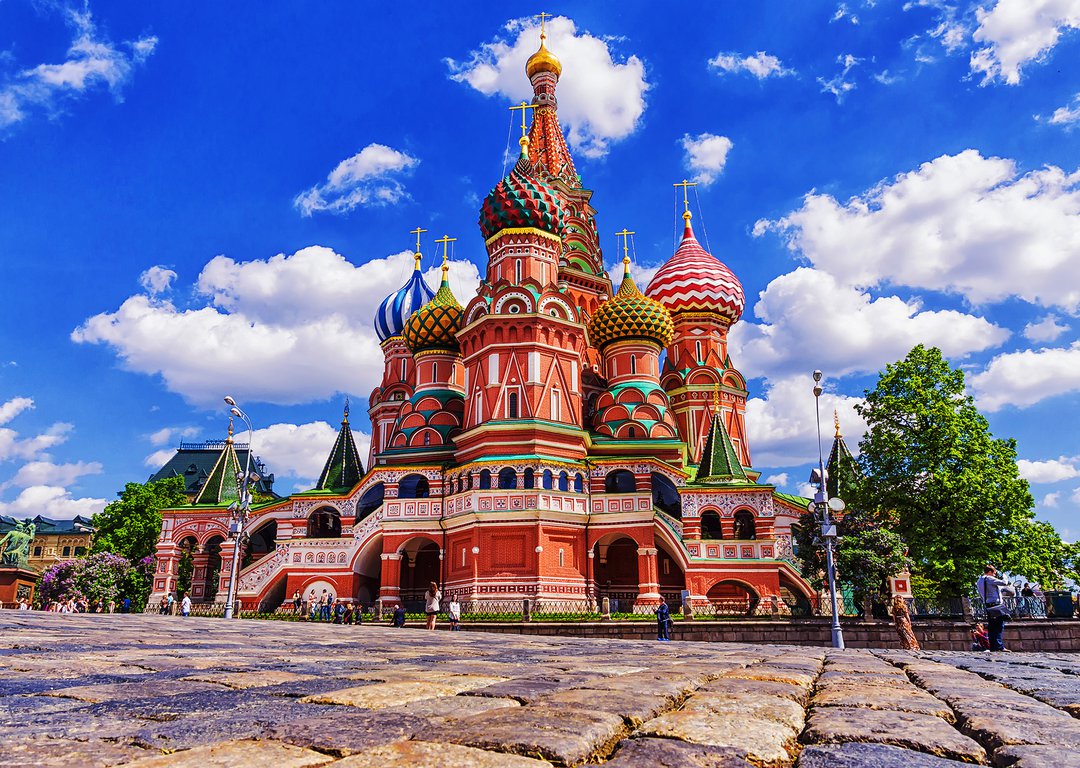 St. Basil's Cathedral
St. Basil's Cathedral➤ Breakfast
➤ Moscow metro tour
➤ Moscow Kremlin tour visiting Cathedrals & the Armory Chamber (Treasury)
➤ Walking city tour: the Red Square, St. Basil's Cathedral (outside), Lenin’s Mausoleum (outside), GUM
➤ Old Arbat at leisure
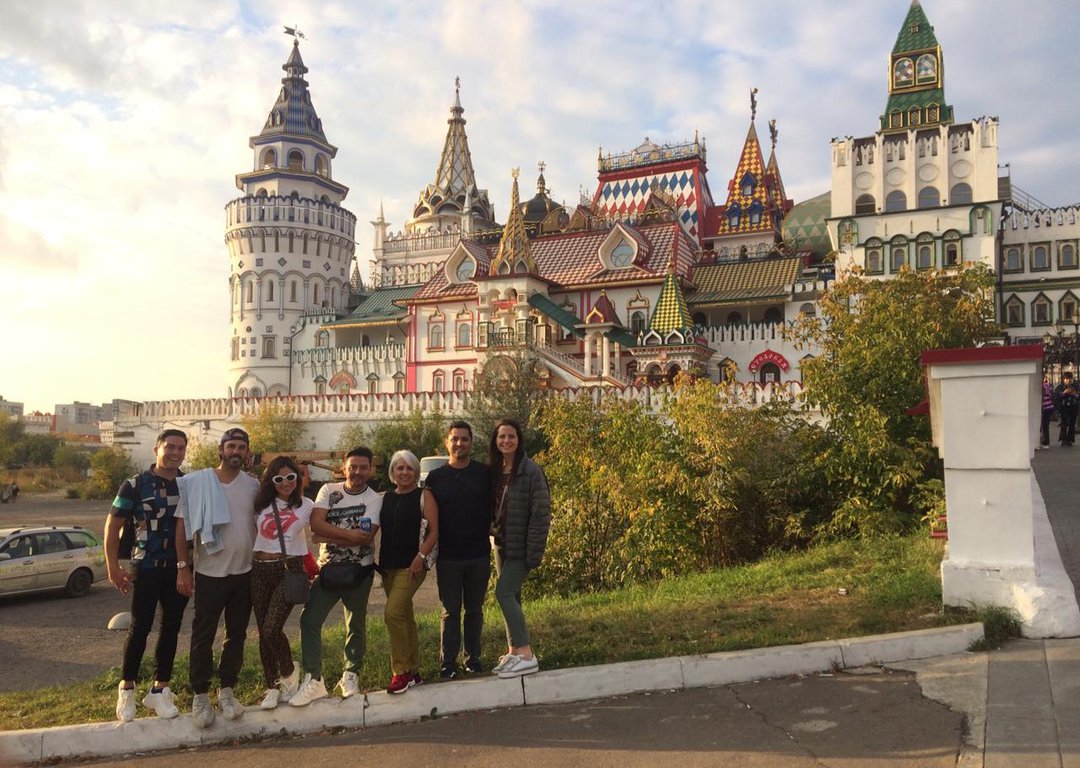 Our guests
Our guestsSaint Basil's Cathedral (also known as Pokrovsky Cathedral) is one of Russia's most iconic landmarks, standing proudly in Red Square, Moscow. Far more than just a church, this extraordinary monument was constructed to commemorate the Russian victory over the Khanates of Kazan and Astrakhan. The cathedral was built by order of Tsar Ivan the Terrible, marking the military triumph on the feast day of the Intercession of the Theotokos—a significant occasion in the Russian Orthodox Church. The cathedral's design is as unique as its history. Its architectural style blends traditional Russian elements with vibrant colors, bold patterns, and intricate details. The building features a series of towering onion domes, each uniquely shaped and adorned with vivid colors and geometric patterns.
Over the centuries, Saint Basil's Cathedral has become not just a place of worship, but a symbol of Russian national identity and the strength of the Russian Empire. Today, it is a UNESCO World Heritage Site and one of the most visited and photographed landmarks in Moscow, drawing millions of visitors who come to admire its distinctive beauty and historical significance.
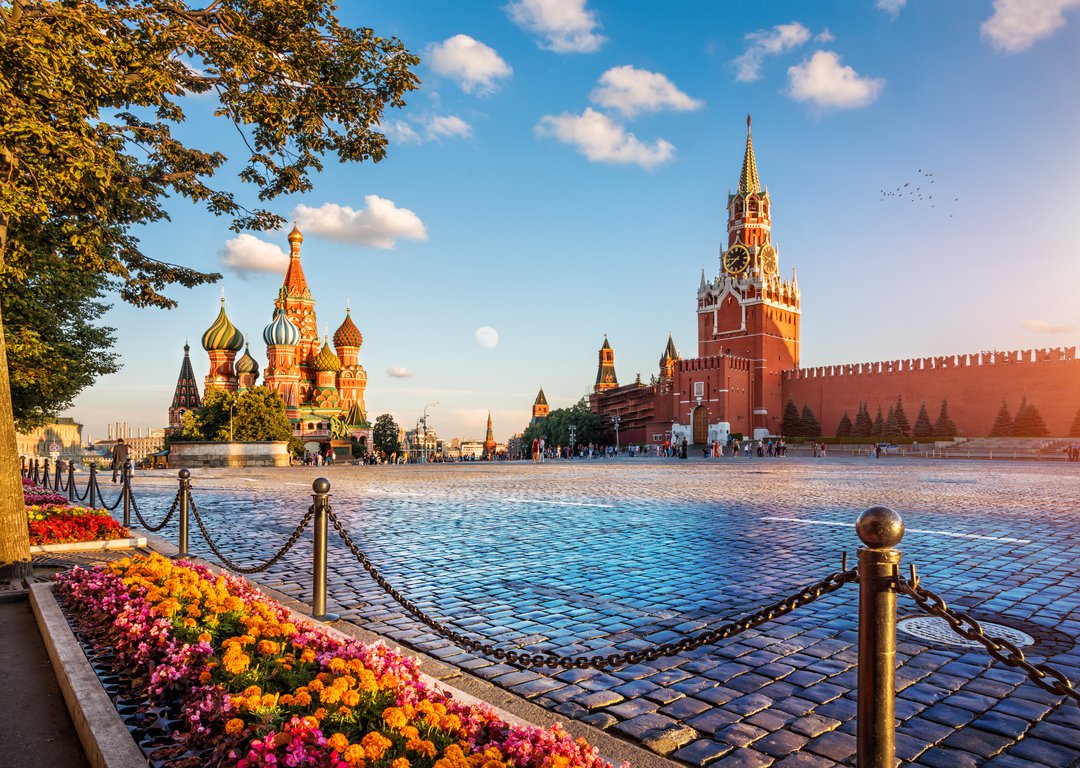 The Moscow Kremlin & Red Square
The Moscow Kremlin & Red SquareThe Kremlin is not only the largest active fortress in Europe but also one of the most powerful symbols of Russian history and authority. Originally constructed to protect Moscow's citizens, the word "Kremlin" translates to "fortress inside a city," a fitting description of its imposing walls and strategic location. Over the centuries, as Russia expanded its power, the Moscow Kremlin evolved into the epicenter of political, religious, and cultural life in the country. Today, the Kremlin stands as a UNESCO World Heritage Site and remains one of the most iconic landmarks in Russia.
Explore the Kremlin's rich history with our knowledgeable guide who will take you through its fascinating past, including visits to the main Cathedrals and the Armory.
The Kremlin chimes, located on the Ivan the Great Bell Tower, are among the oldest and most famous clocks in Russia. These chimes have been ringing for over five centuries, marking the passage of time with their massive bells. The clock mechanism itself is immense—its minute hand stretches over 4 meters, and the total weight of the bell reaches 25 tons. The diameter of the dial measures an astonishing 9 meters, making it a remarkable sight and sound to experience.
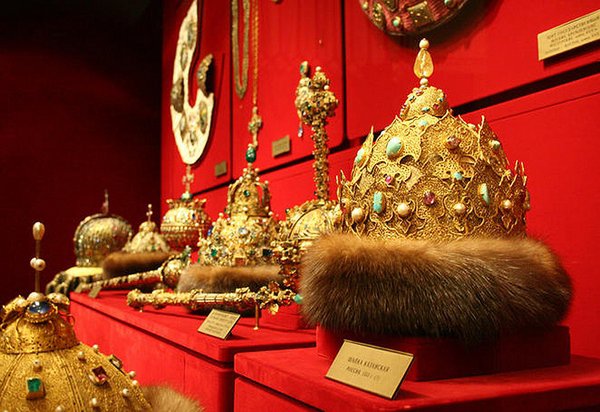 The Armory Chamber
The Armory ChamberThe armory - the treasury museum - is part of the complex of the Grand Kremlin Palace. The basis of the museum collection was for centuries precious objects stored in the Royal Treasury and the patriarchal sacristy, made in Kremlin workshops, as well as donated from Embassies of foreign states. The museum owes its name to one of the oldest Kremlin treasury stores.
The armory stores ancient state regalia, ceremonial royal clothing and coronation dress, vestments of hierarchs of the Russian Orthodox Church, the largest collection of gold and silver masterpieces of Russian masters, Western European art silver, monuments of armory, a collection of crews, items of ceremonial horse decoration.
The museum presents about four thousand monuments of decorative and applied art of Russia, countries of Europe and the East of the IV - early XX centuries. Their highest artistic level and special historical and cultural value brought world fame to the Armory of the Moscow Kremlin.
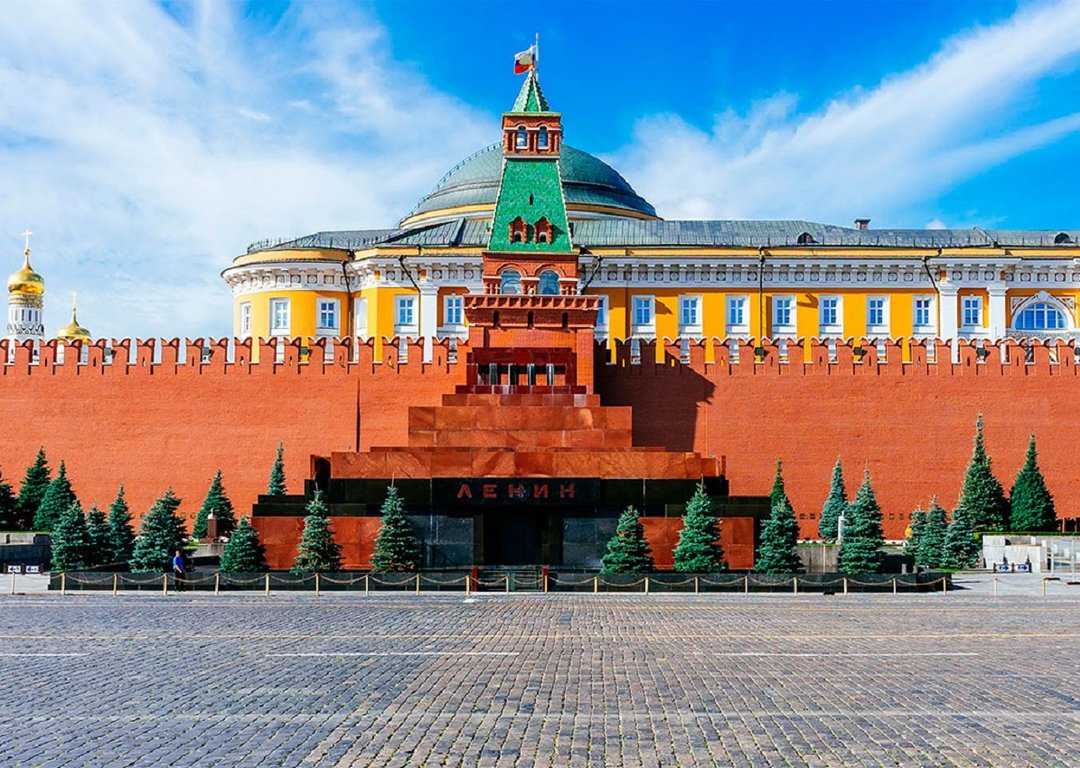 Lenin's Mausoleum
Lenin's MausoleumThe Red Square's name originates from the Russian word krasnaya, which historically meant both "red" and "beautiful." While today "krasnaya" is most commonly associated with the color red, in older times, it also carried the meaning of something being beautiful or grand. So, the square's name reflects both its striking appearance and its importance as a symbol of Russian heritage. It's no wonder that many visitors consider it one of the most memorable parts of their trip to Russia.
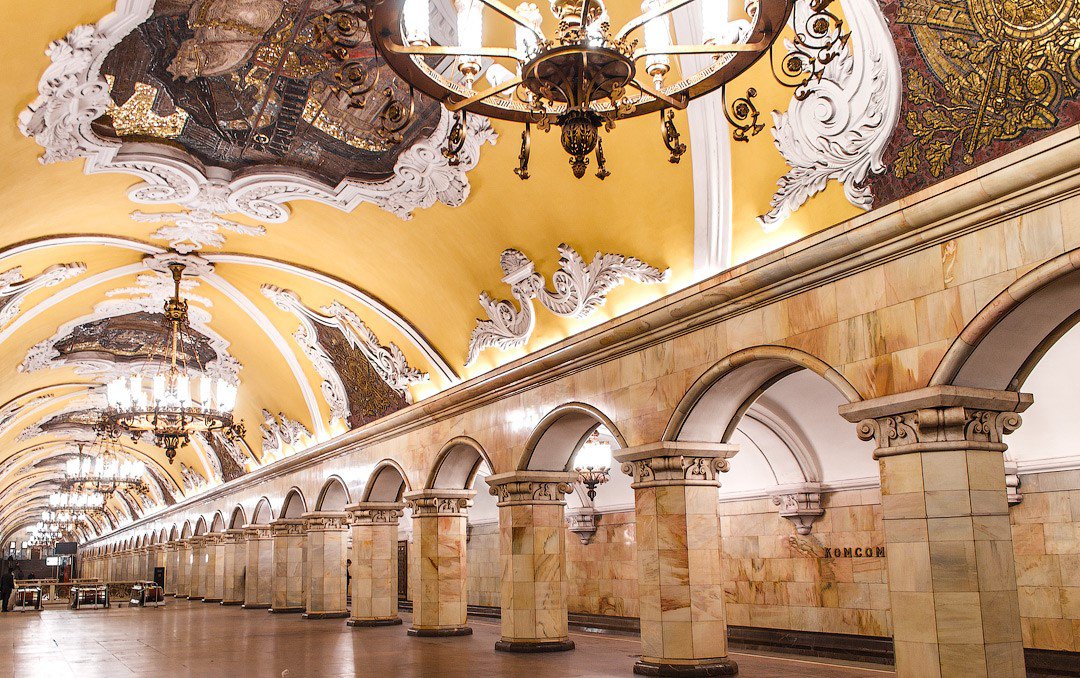 Moscow Metro
Moscow MetroThe Moscow Metro is not just a practical way to navigate the city; it’s an experience in itself, offering a glimpse into the heart of Russian history and culture. Opened in 1935 it has since grown into one of the largest and busiest metro systems in the world, with 268 stations crisscrossing the city. It is the busiest metro system in Europe, serving millions of passengers every day. What makes the Moscow Metro truly unique is the architectural beauty of many of its central stations. Far from being mere transport hubs, these stations are stunning examples of Soviet-era grandeur and decorative art. As you travel through them, you’ll encounter intricate mosaics, marble columns, ornate chandeliers, and frescoes that depict scenes of Soviet ideals and Russian history. Some stations, such as Kievskaya, Mayakovskaya, and Ploshchad Revolyutsii, are renowned for their art-deco and socialist realism designs, making them iconic landmarks in their own right. Riding the metro not only offers a quick way to avoid Moscow’s notorious traffic but also provides an immersive way to appreciate the city’s architectural heritage, with each station telling its own story of the past. It’s a must-do for anyone visiting Moscow, giving a deeper understanding of the city and its historical significance.
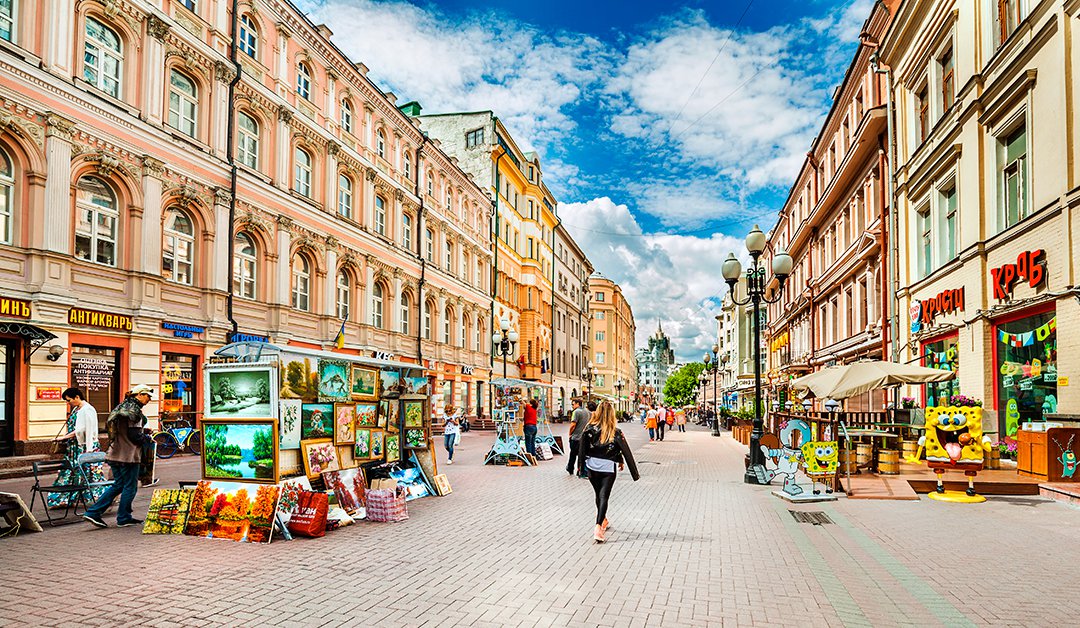 Old Arbat
Old ArbatStary Arbat Street is indeed one of Moscow's most historically significant and charming streets. As you walk along its cobblestone pathways, you’re not just navigating a physical space, but also stepping through layers of Russian history and culture. The street's vibrant atmosphere has long made it a hub for artists, writers, and musicians, dating back to the 19th century. Its quaint cafes, unique shops, and street performers add to its bohemian vibe, creating a space where past and present seamlessly coexist. The architecture along Arbat is an eclectic mix of old buildings, some with Soviet-era influences, while others preserve a more classical, pre-revolutionary style. In the evening, the street comes alive with warm lights and the hum of conversation, making it a perfect spot for a leisurely stroll. Whether you're admiring the colorful murals, chatting with local artists, or simply absorbing the lively ambiance, Stary Arbat offers a glimpse into Moscow's artistic soul.